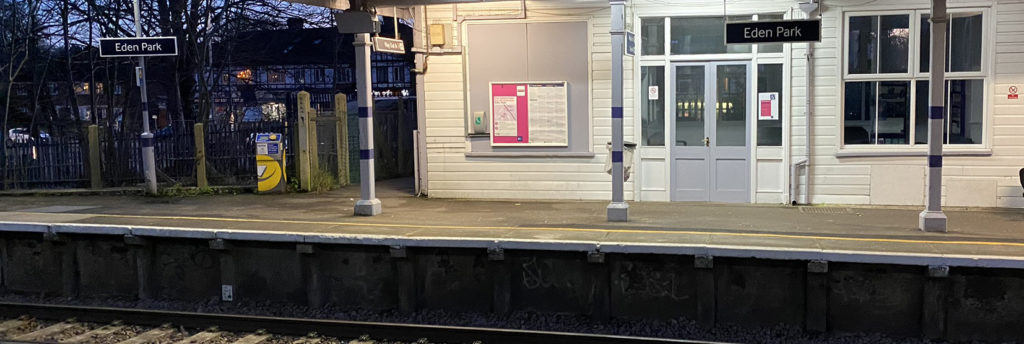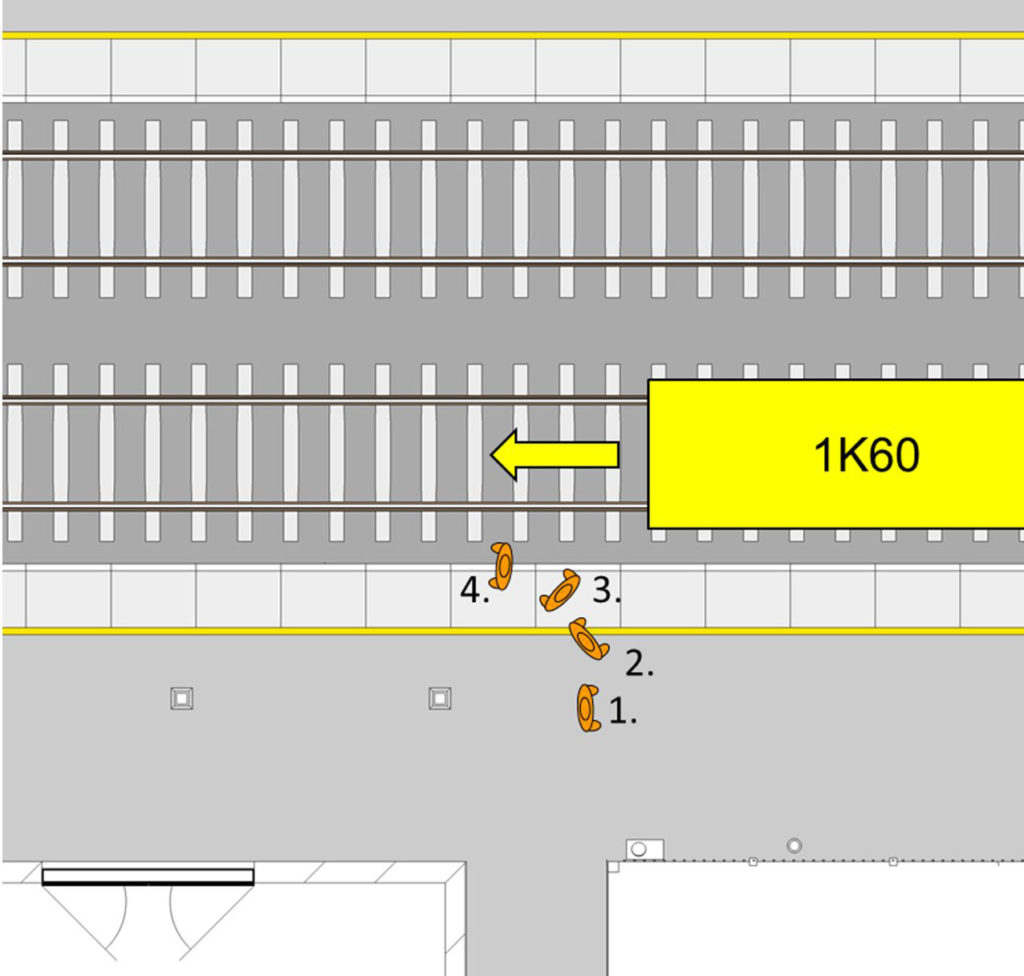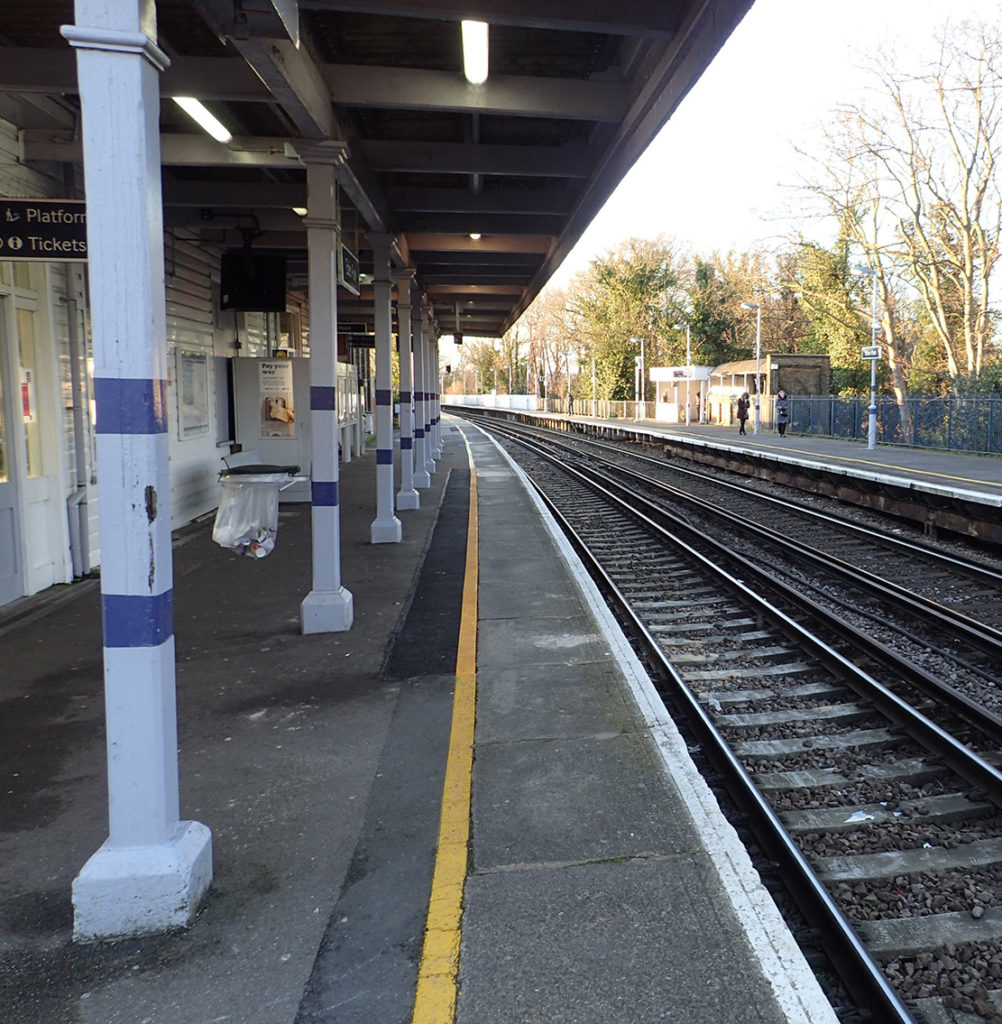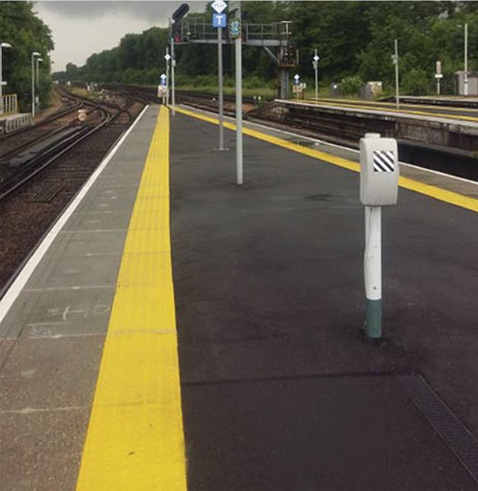30 year old track patroller fatally injured near surbiton and RAIB publish report on fatal accident to vision impaired passenger at Eden Park station.
There was a euphoria about the pandemic vaccinations which has affected us all until I heard about the fatal accident to a young man working as a track patroller near Surbiton on February 9th.
Equally distressing is the saga that led to the accidental death of a vision impaired intended traveller who fell onto the track at Eden Park Station over a year ago on February 26th 2020 as his train entered the station.
Lessons learnt involve the inconsistent and confusing use or non-use of tactile strips on platforms and the reasons for the twelve-minute delay in rendering assistance to a traveller who died at the scene. The Rail Accident Investigation Branch (RAIB) report is thorough, and its recommendations are far reaching.
Track patroller fatality near Surbiton
Tragically I must begin by expressing my sincere condolences to the family, friends and colleagues of track patroller Tyler Byrne from Aldershot who at around 1135 on the morning of February 9th was struck and fatally injured by a passenger train near Surbiton Station in south west London. The Waterloo to Salisbury train involved was travelling at 76 mph on the down fast line.
The RAIB investigation is underway. Their news story says he was one of four track workers undertaking a regular planned inspection of switches and crossings whilst the lines were open to traffic “with arrangements in place to protect staff from train movements”.

Network Rail’s Safety Central website says that a cyclic weekly inspection was being undertaken with the patroller working with three others acting as site lookout, distant lookout and patrollers assistant respectively. The team were experienced and familiar with the location. The up to down fast crossover was being inspected at the time of the accident. On Network Rail’s website a number of points to consider are listed including, “What arrangements could you use to avoid unassisted lookout working?”
Safety Culture and “White Zone Working”
Over a year ago in response to the fatal accident at Margam Port Talbot a 100-person strong task force was set up by Network Rail to improve the safety of track workers. Four key elements have been identified.
- Risk based maintenance, technology to protect people.
- Consistent use of track circuit operating devices and other protections.
- Signaller workload and the use of line blockages.
- Safety culture.
Network Rail’s Chief Executive Andrew Haines described safety culture as “the big nut to crack”. Not only is it big, but I suggest it is by far the most important of them all!
In Railstaff July/August last year I emphasised my support for “White Zone Working” as advocated by Simon French of the RAIB. He highlighted the fact that the French and other European railways, as well as Docklands, London Underground and others all benefit from the timetabling of White Periods with no trains running so that inspections and maintenance works may be carried out more safely in off peak daylight hours.
RAIB’s annual report last year noted that “since 2005 there had been 45 incidents involving track workers, 8 resulted in fatalities, and 12 in injuries. Between 2005 and 2019 a total of 44 investigations by RAIB involved trackworkers”. I question the need for any regular track inspections being carried out whilst trains are running.

Passenger fatality at Eden Park Station
On February 19th RAIB released their report 01/2021 following their investigation of the fatal accident to a 53-year-old vision impaired man that occurred on Wednesday 26th February last year. The man entered Eden Park Station 14 minutes before the accident and used the subway and stairs to access the platform.
The station is on the third rail electrified 750-volt DC Mid Kent line and is leased from Network Rail by the Southeastern Railway. The train involved was the 1900 Hayes to Charing Cross, an EMU service made up of 10 cars including but both Class 465 and 466 units. The forward-facing CCTV with which they were fitted was not working at the time of the accident!
When the arrival of the train was announced the intended passenger moved towards the edge of the platform and walked along, falling onto the track as the train driver sounded his warning horn as he arrived at the platform.
Incomplete tactile surfaces and 12 minutes delay
The published report reviews the use of tactile surfaces, research both here and in the USA and the advice of the Royal National Institute for Blind People. Network Rail’s standard requires the installation of tactile surfaces when there is a “reasonable opportunity” but no work had been done to match this in the 20-years before the accident. A survey of Kent and Sussex route stations in 2019 identified 145 with tactile surfaces that were not installed over the full length of the platforms.
Immediately after the accident the train driver made an emergency call to the signaller asking for the traction current to be switched off and emergency services to be called.
Another passenger called 999 whilst talking to the passenger underneath the train. On arrival emergency services were unable to determine whether the third rail traction power supply had been turned off until a member of Network Rail staff arrived at the scene! This resulted in a 12-minute delay between ambulance staff arriving on site and being able to access the track and provide medical care!
Poor standard of communications
RAIB’s review of voice recordings revealed “a poor standard of safety critical communications throughout which contributed to the uncertainty about the status of the electrical power during the response to the accident”.
Eden Park has now been fitted with platform markings to assist visually impaired people including tactile surfaces and Network Rail Southern Region have funded the installation of tactile surfaces throughout their Kent and Sussex routes. These are scheduled for completion by April 2022.
RAIB recommendations
Department for Transport and Network Rail in consultation with others are to create a coherent policy and associated process for establishing when tactile surfaces should be provided at the edge of platforms.


They are also to develop and progress a time bound programme to install tactile surfaces where justified by safety benefits and the Rail Delivery Group (RDG) assisted by the Rail Safety and Standards Board (RSSB) and others are to research and develop means of reducing risk where tactile surfaces have not been installed.
Office of Rail and Road (ORR) is to amend its “Accessible Travel Policy” to ensure the publication of information detailing which stations are fitted with tactile surfaces. The RSSB is also is to develop ways of managing data so that the safety risks to disabled people travelling are managed. The sixth and final recommendation requires BT Police, Fire, Ambulance and Network Rail to review and improve their processes for requesting and confirming that no trains are moving and electrical power supplies are switched off when Network Rail are not on site.
Simon French, Chief Inspector of Rail Accidents said “This tragic accident resulted in the death of someone who had impaired vision and mobility, and relied on the railway to transport him safely. My thoughts are with his family, and others who knew and were close to him, as we publish our investigation report. Our investigation concluded that the absence of a tactile strip along the platform edge may have been a factor in this accident. These strips are used to provide visually impaired passengers with an indication that they are approaching the platform edge. Eden Park is far from unique: around half of all mainline stations in the UK are also not equipped with this valuable aid to the visually impaired.
Our investigation found that government and the railway industry have policies in place to make rail travel more accessible for people with disabilities. However, there appears to have been no coherent strategy for the provision of tactile strips, despite their obvious importance to visually impaired people who value the opportunity to travel independently, without reliance on staff.
Although RAIB recognises that the immediate provision of tactile strips across the network would be very expensive, there is a need to develop a new policy to guide decision makers. This would inform the development of a programme for installation of tactile strips, particularly at places where the risk is likely to be higher, such as busy unstaffed stations. It cannot always make sense simply to wait until platforms are refurbished to install the strips.
While accessibility has rightly been promoted in recent years, it is important that safety is properly considered when the industry is looking at the arrangements and facilities that they provide for disabled or impaired passengers. The well-established principle that additional measures should be provided to protect rail passengers, where reasonably practicable to do so, applies to all. It is for this reason that we are urging a re-think on the approach to provision of tactile strips to ensure that they are installed where most needed.”
Near misses at User Worked Crossing (UWC) in Norfolk
On February 17th RAIB announced its investigation into a near miss at Coltishall User Worked Crossing that occurred at around 1721 on January 21st when a passenger train narrowly avoided colliding with two cars. Coltishall, a public road crossing, had “higher than normal levels of road traffic due to the temporary closure of a nearby main road”.
Closed circuit television recordings showed the first car clear of the crossing just three seconds before the train passed with a following car approaching from the same direction stopping clear of the crossing as the train approached. There were no injuries or damage.
Coltishall crossing has telephones which users are directed to use with signage directing them to obtain permission from the signaller before crossing. However, the RAIB news story says “RAIB has been unable to find any evidence that a request was made by the drivers of the cars involved in this incident”.
It will consider how the crossing was being managed by Network Rail, including how risks associated with a user worked crossing on a public road were assessed and mitigated. It will also consider the presence of user worked crossings on public roads more generally and any other relevant underlying issues.
White Zone working now!
I suggest that now is the right time for the rail industry to take stock and review its working practices and adopt the RAIB proposal that White Zone working should be mandated for all planned inspection and maintenance work. Due to the pandemic fewer trains are running and it seems likely that the return to morning and evening peaks will be slow and involve fewer travellers than before the first lockdown. Arguably a mixture of working from home and office working will become the norm with businesses reducing their costs by paying for less office space. I have little doubt that White Zone planned working will not only save lives but also contribute to “cracking the nut” by changing railway safety culture.
Report by Colin Wheeler

